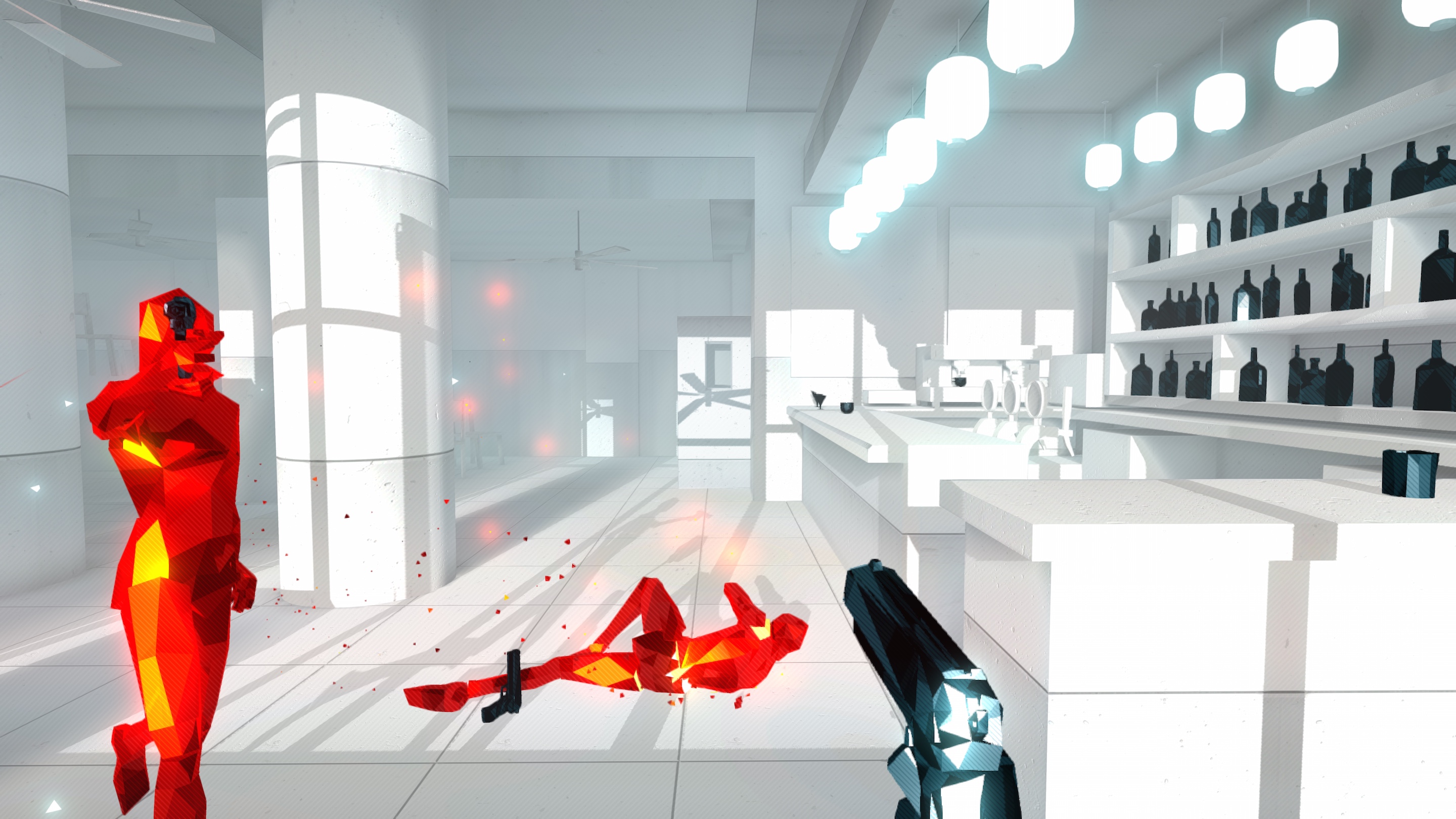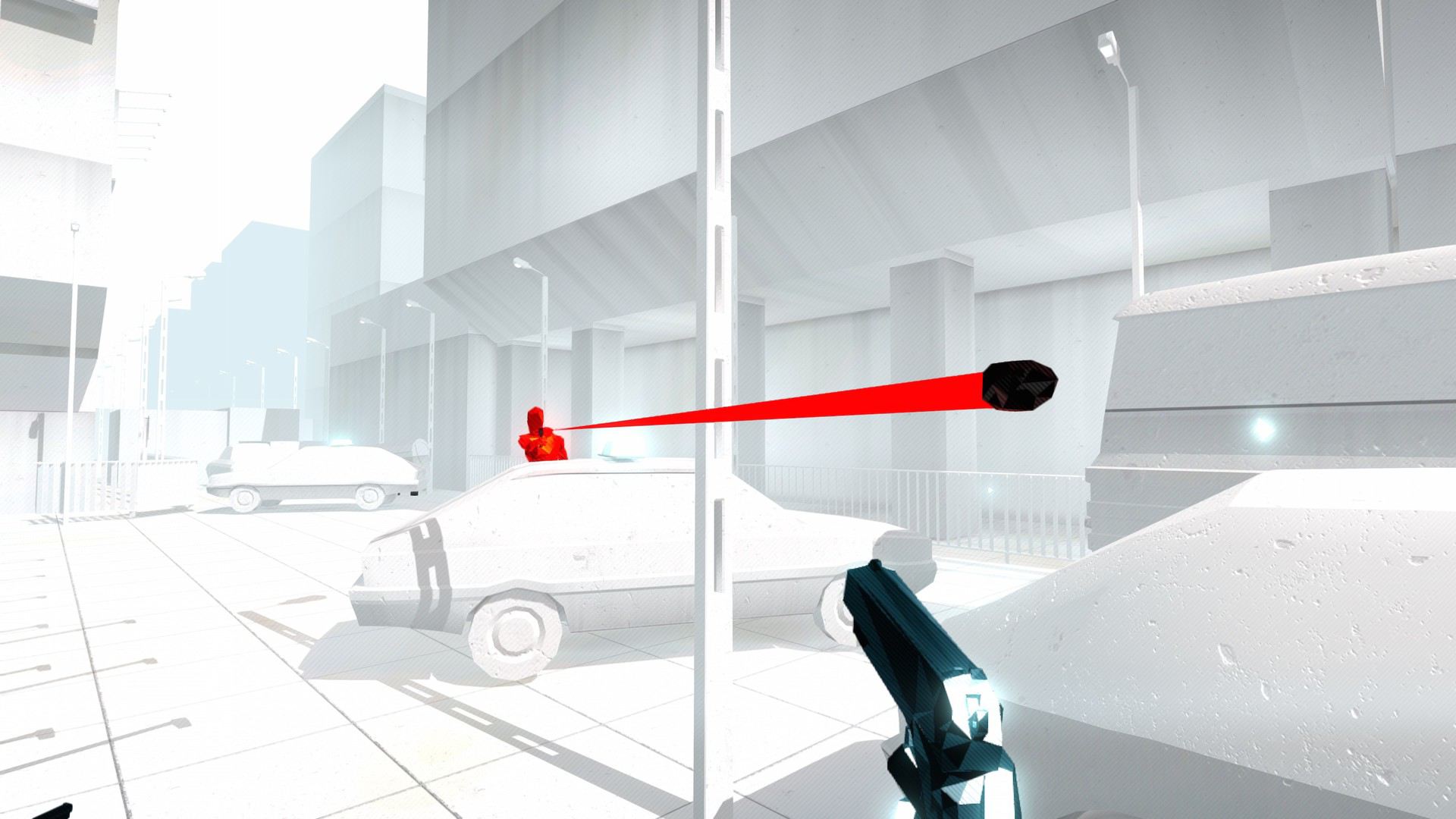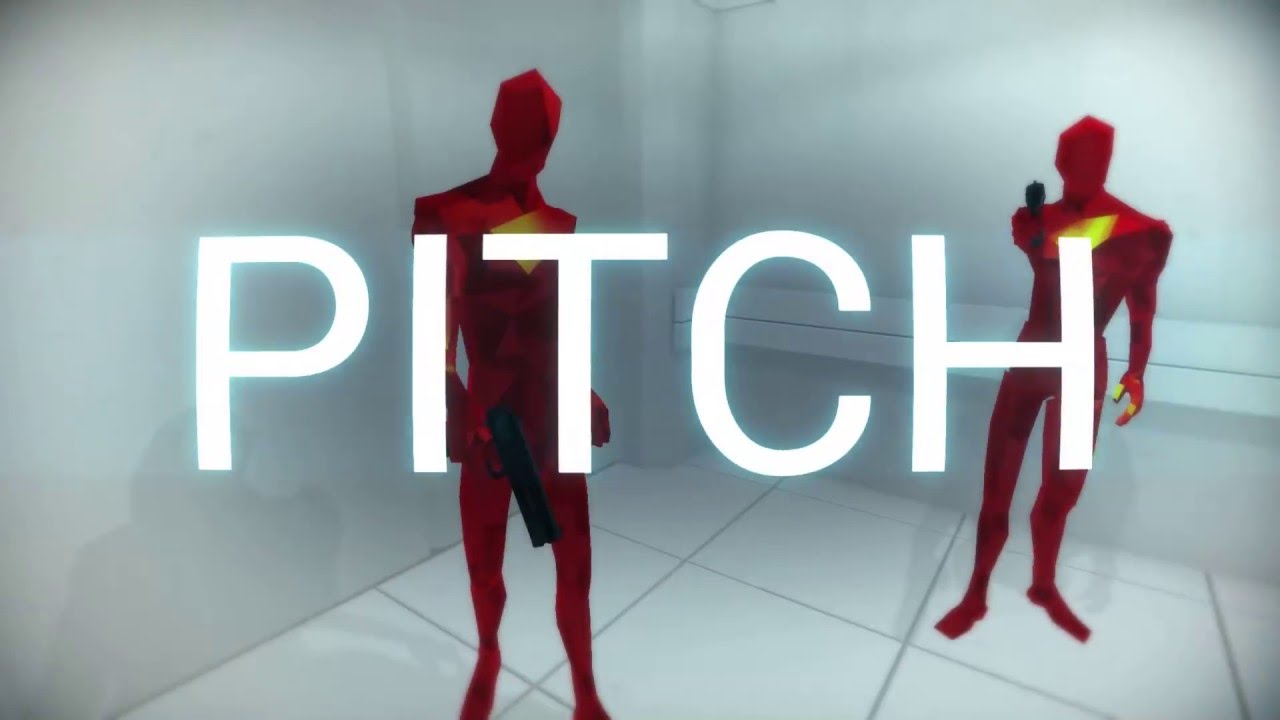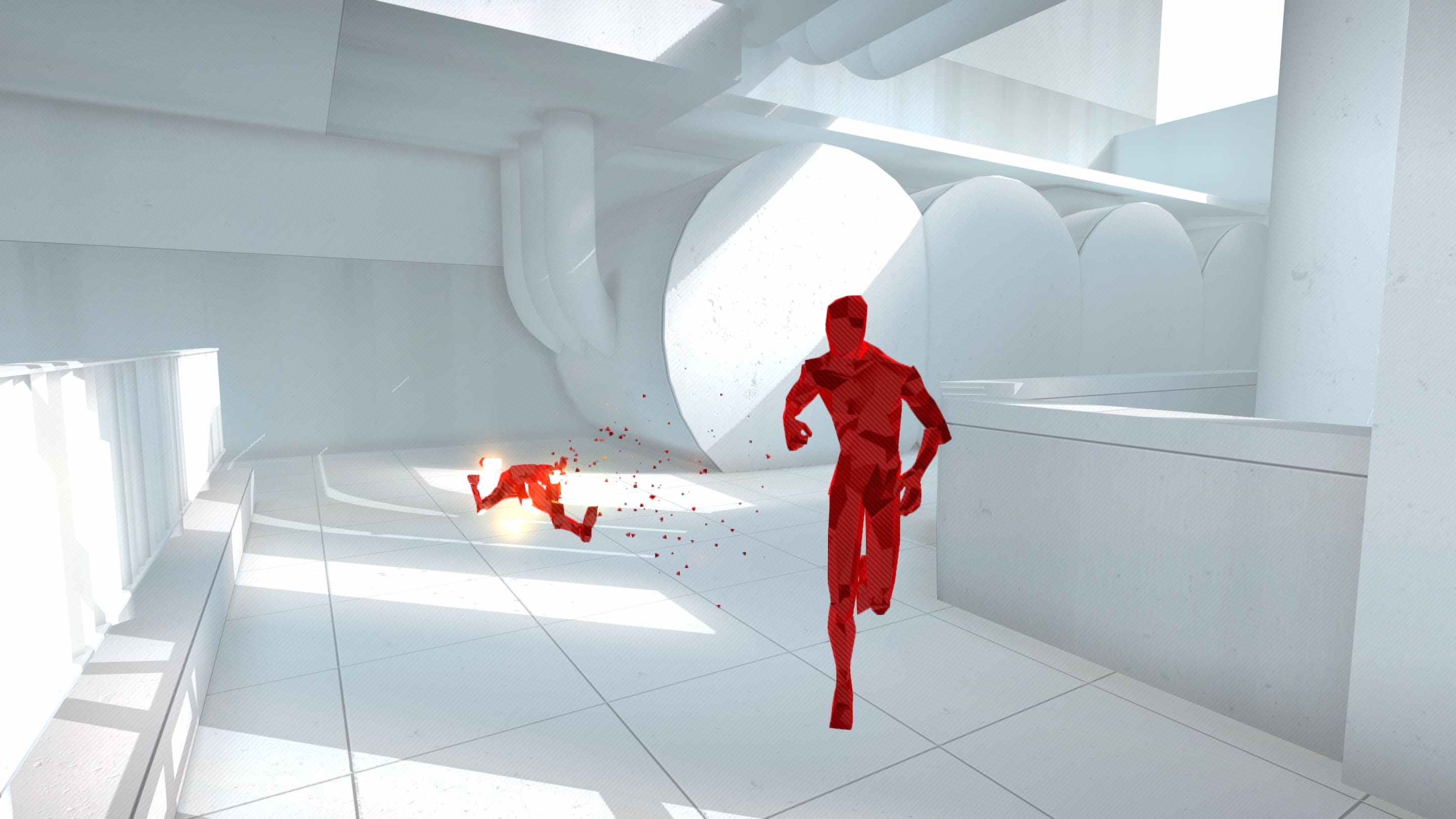SuperHot. Not Your Typical Puzzle Game.
SuperHOT was released not too long ago on Steam (with a day 1 release on Linux as well, thanks to the devs for their support), and I have seen it sometimes categorized as bullet-time FPS. This is a false comparison, because at its core, SuperHOT is very much a puzzle game. But even the term puzzle is pushing it, because more than anything else, SuperHOT is a game where you need to be good at estimations more than anything else.
I’ll pass on the premise of the game - it’s fairly obvious that the devs had no idea how to make a story around it, and frankly it would probably have been better to let the writer go and stop pretending there’s any flow between levels, because there’s none. So here you are, starting in a space where everything looks pretty much white around, with red silhouetted enemies coming out of nowhere to kill you (usually with firearms). The only advantage you have against such hordes of enemies is time to think.
In the original demo released long ago, SuperHOT used to freeze time completely unless you started moving around. They have changed that a little and in the final game, time is actually moving on, albeit very slowly, even when you are immobile. I guess such a decision was made to force the player to act, versus letting you have infinite time for thinking. The fact that time is slowed down significantly makes it possible for you to avoid bullets (not as cool as Neo in the Matrix, though…) and position yourself favorably for the next move.

Some levels of SuperHOT can be solved in the first go, but most of the time, especially in later levels, it requires trial and error. Since there are no lives you are free to restart as many times as you want, so it’s not a matter so much of “how” to do it, rather how long you stick at it to beat the levels. Sooner or later you are bound to grasp one of the ways to finish the level. I say “ways” because unlike many puzzle games, and somehow like FPS games, there are often multiple ways out of one situation. For example, you may be armed with a simple gun while three guys are running at you, two of them armed with guns and the third one with a rifle. You could try to gun them down one after the other using your gun, however this may be difficult since it takes time for the chamber to rotate in your gun and be ready for the next bullet. You could gun down one of them, and throw your gun at the face of the second while going bare-handed to hit the one holding the shotgun - which could prove dangerous if they have time to shoot before you reach them. Or, you could, let’s say, throw your gun at the guy with the shotgun, grab his rifle as it flies in the air, and then shoot once with the rifle hoping to hit both opponents at once, since the shotgun throws numerous projectiles.
A lot of what i describe is actually unrealistic and counter intuitive. In SuperHOT, for example, whenever you throw an object at your opponent, as long as the object does not hit the opponent’s gun directly, the opponent will drop the gun and it will fly towards you making it easy to grap in the air. It’s almost parodic as this kind of things actually never happens in reality and even movies don’t use that trick anymore as it’s too far-fetched. But here, it’s a key mechanism to use. There are many other things that barely make any sense. For example, whenever you throw objects, their relative speed is obviously slower than bullets, but not THAT much slower. This is probably massively wrong, but again this is something you have to realize to understand how to use objects at your advantage in about every situation.

SuperHOT can get away with such details because it basically says this is happening in a virtual world - so you could make the logic that everything is just a game and it’s certainly not based on anything remotely realistic - and that is further stressed out by the way things are presented, with white environments and enemies being simple red figures.
However, that does not excuse some of the bugs I have found. Sometimes you can grab objects that are behind walls, just because you are at the appropriate distance to grab them - the game apparently ignores collision detection or stuff like that. It’s a small detail but unless it was made on purpose, this sounds like poor quality check from the part of the devs.
There are also several ways to “game” the levels. It’s not possible all the time, but say if you have a shotgun and just decide to wait in a corner for enemies to reach you, you can get rid of 5-6 opponents this way without any problem. As soon as they kind of appear around the corner, you shoot, then reload, shoot, then reload, and for the remaining few ones you can just throw your shotgun at their face, grab their gun and finish the job. Easy as pie. The devs must have realized this issue and have therefore implemented triggered events throughout levels, so that not all enemies would show up at once all the time. That makes things a little more difficult, but there are clear flaws in the AI - they may have lots of guns but they are mentally challenged, and don’t really work together: most of the time they shoot and run at you, and that’s it.
Because of all these issues, SuperHOT relies heavily on level design to lead you from one level to another. And there are some very good levels in the lot… as well as poorer ones. I kind of liked the “elevator pitch” where you start in an elevator with three guys trying to gun you down while you are bare-handed. It’s intense and give very little room for error. However, the office floors levels are usually not as interesting (cubicles and enemies coming out in between without any way for you to know what’s happening) and rely heavily on trial and error until you memorize where enemies come from in such levels.

Overall, the problem with SuperHOT is that it’s a one-trick pony. I’m not sure if the developers really had a REAL game idea there. The demo back in the days was interesting in itself, but the game does not really build further on it - it’s pretty much the same idea, with more levels, more polish and a few additional options (later the game allows you to transfer your mind into enemies instead of shooting them - a kind of teleportation kill) but it feels very limited. I know we are talking about a very different genre here, but Max Payne was also very much a one-trick pony game, with its bullet time mode - yet it managed to stay worth playing from beginning to end because the devs attached it to a broader story, compelling enough for you to want to go to the end. Puzzle games like Portal bring progressively more complexity and challenge you more and more as you go - so the difficulty and lack of obvious solution becomes the point in itself to go on.
SuperHOT is rather poor in such areas. Not complex enough to be considered a real, challenging puzzle game, and without any story to make you overlook such flaws. Maybe it’s just me, but after a while I tend to get a little bored.
It’s a bit of a shame. Design-wise, going for white landscapes is bold and looks very refreshing and even beautiful at times. Very distinctive. There are many cool transition effects as well from the menu to the levels themselves (the matrix-like tunnel effect, coming out of nowhere, at one point. was a surprisingly good idea). Had they managed to render the game itself a little more interesting to play, they would have had a winner in their hands. Nevertheless, it seems to have been a commercial success based on the number of comments on Steam, so we can still hope for a better game if they make a second episode.

How about the Linux port ? I played the game on SteamOS and I did not get particular issues. It plays well with the Steam Controller. The only issue I encountered was the lack of a SteamOS-friendly launcher (instead of a full screen launcher you get a GNOME window before the game launches - it does not look well integrated) since you need to switch back your Steam Controller in a mouse mode to pass that screen the first time. Performance-wise, I was on a high end config (GTX970) and everything was smooth as butter, so no particular issue there. If all day 1 Linux launches were like that, it would not hurt.
